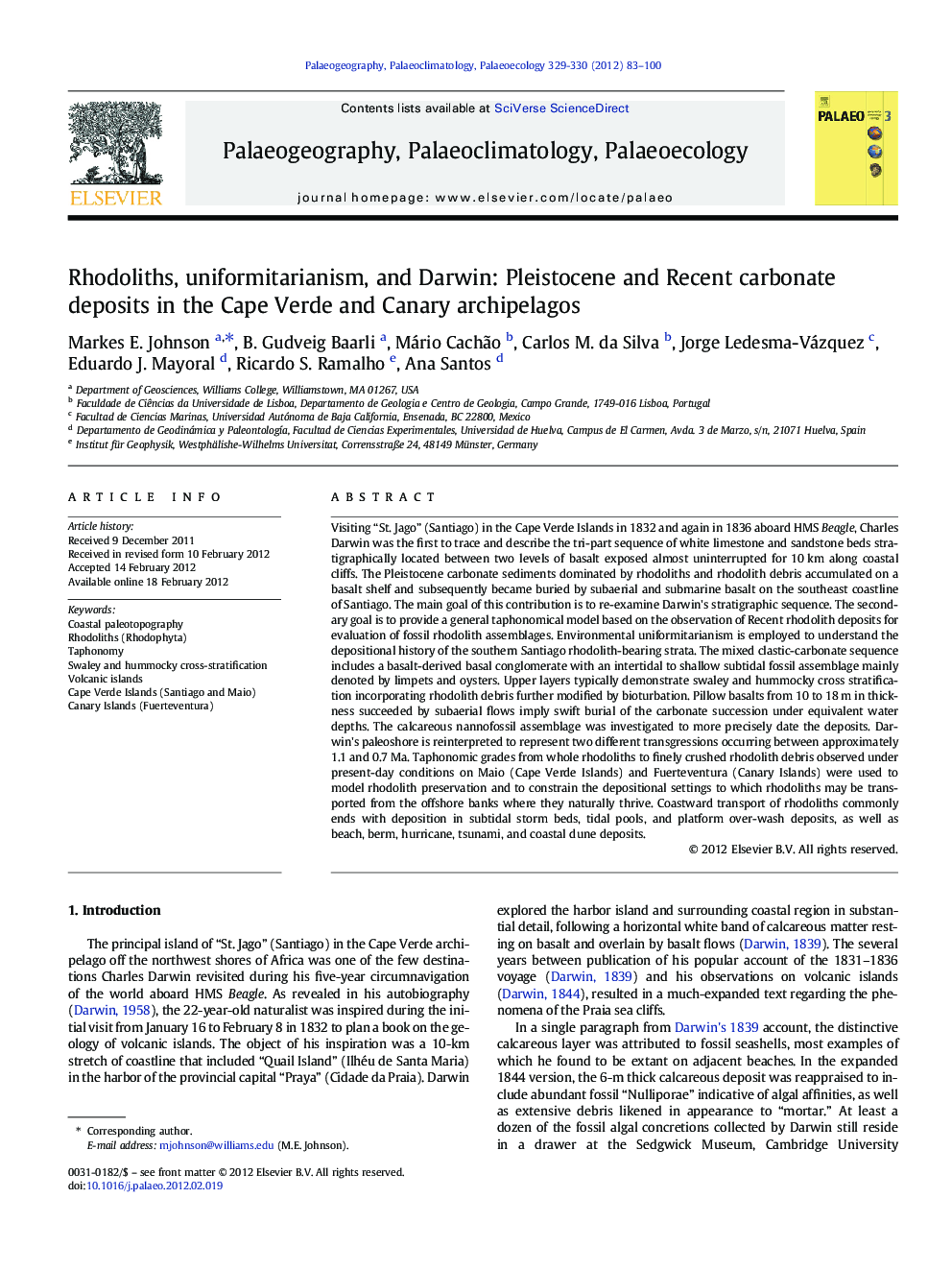| کد مقاله | کد نشریه | سال انتشار | مقاله انگلیسی | نسخه تمام متن |
|---|---|---|---|---|
| 6350540 | 1622235 | 2012 | 18 صفحه PDF | دانلود رایگان |

Visiting “St. Jago” (Santiago) in the Cape Verde Islands in 1832 and again in 1836 aboard HMS Beagle, Charles Darwin was the first to trace and describe the tri-part sequence of white limestone and sandstone beds stratigraphically located between two levels of basalt exposed almost uninterrupted for 10Â km along coastal cliffs. The Pleistocene carbonate sediments dominated by rhodoliths and rhodolith debris accumulated on a basalt shelf and subsequently became buried by subaerial and submarine basalt on the southeast coastline of Santiago. The main goal of this contribution is to re-examine Darwin's stratigraphic sequence. The secondary goal is to provide a general taphonomical model based on the observation of Recent rhodolith deposits for evaluation of fossil rhodolith assemblages. Environmental uniformitarianism is employed to understand the depositional history of the southern Santiago rhodolith-bearing strata. The mixed clastic-carbonate sequence includes a basalt-derived basal conglomerate with an intertidal to shallow subtidal fossil assemblage mainly denoted by limpets and oysters. Upper layers typically demonstrate swaley and hummocky cross stratification incorporating rhodolith debris further modified by bioturbation. Pillow basalts from 10 to 18Â m in thickness succeeded by subaerial flows imply swift burial of the carbonate succession under equivalent water depths. The calcareous nannofossil assemblage was investigated to more precisely date the deposits. Darwin's paleoshore is reinterpreted to represent two different transgressions occurring between approximately 1.1 and 0.7Â Ma. Taphonomic grades from whole rhodoliths to finely crushed rhodolith debris observed under present-day conditions on Maio (Cape Verde Islands) and Fuerteventura (Canary Islands) were used to model rhodolith preservation and to constrain the depositional settings to which rhodoliths may be transported from the offshore banks where they naturally thrive. Coastward transport of rhodoliths commonly ends with deposition in subtidal storm beds, tidal pools, and platform over-wash deposits, as well as beach, berm, hurricane, tsunami, and coastal dune deposits.
⺠Nannofossils, indicate a Pleistocene age (1.1-0.7 Ma) for Darwin's limestone. ⺠Marine onlap on rocky shores crossed uneven surfaces related to drowned headlands. ⺠Overlying subaerial flows vs. pillow basalts distinguish between two paleoshores. ⺠Shape analysis of abundant rhodoliths shows selection for transported forms. ⺠Rhodolith taphonomy from Recent deposits aids interpretation of fossil deposits.
Journal: Palaeogeography, Palaeoclimatology, Palaeoecology - Volumes 329â330, 15 April 2012, Pages 83-100